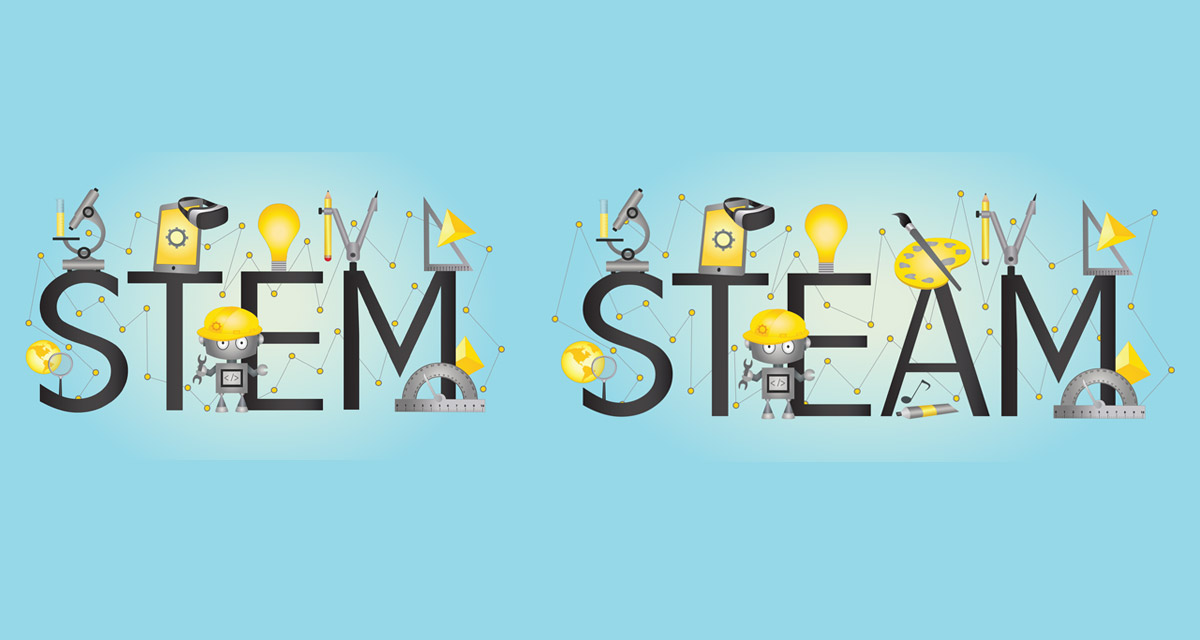You may have heard the acronyms STEM and STEAM before, especially if you are a parent. These acronyms are used to describe educational curriculums that have risen in popularity. Currently, there is a push for students to learn more about the sciences and arts. With the uncertainty about jobs and the economic climate, the more skills in different areas a student can learn, the better equipped they’ll be once they get out of school. To start with these, it is important to understand the differences and similarities between STEM and STEAM, along with activities you can do with your family.
STEM:
STEM stands for science, technology, engineering, and math. It has been found to be best to incorporate all aspects of STEM into a project, activity, or curriculum, instead of teaching them separately. In the article, “STEM vs. STEAM vs. STREAM: What’s the Difference?” author Ali Trachta states that the objectives of STEM are to “broaden STEM literacy and participation, particularly among young women and people of color, as well as to strengthen the STEM workforce by increasing the number of students who pursue a career in a related field.” In addition, it is designed to help increase competition in careers in science and technology. According to recent research, there is a current need for 8.65 million workers in STEM-related jobs.
STEAM:
STEAM is STEM plus art. Stated in the article “STEM (and STEAM) 101,” the addition of art increases student engagement and allows for a better vision for scientific experiments and technological innovations. In addition, STEAM provides for a more holistic and rigorous approach to 21st-century education. Students are thus being given all the necessary skills to succeed in school and beyond.
STEM and STEAM activities are available for all grades and ages. In addition, you can incorporate into them aspects of the social sciences, such as writing, reading, psychology, and history. Common projects include bridge building, computer programming, and seed necklaces. However, the list doesn’t stop there. An example of an activity is the “Craft Stick Catapult.” This project is adaptable for kids of all ages and is a hands-on experiment to help them think through the various aspects of STEM and STEAM.
Supplies:
- Wide popsicle sticks
- Elastic bands
- Table tennis balls
- Double-sided tape
- Milk bottle top
- Tape measure (optional)
Directions:
- Stack 7 popsicle sticks on top of each other and place an elastic band around each end, to hold them in place.
- Place another stick above the stack and one below it to create a cross shape. Move the stack of 7 in between the two sticks, about ¾ of the way towards one end.
- Twist an elastic band around the middle of the cross, connecting the stack of 7 to the other two sticks. Then, place an elastic band around the two sticks, creating a wide “V” between the stick above and below the stack. You should have about ¾ of the stick on one side of the connecting cross and ¼ of the stick on the other side.
- Using the double-sided tape, attach a milk bottle top. Then, experiment catapulting your table tennis ball into the air. Also, test other objects’ distance.
Questions to Ask Your Child:
- Does a heavier ball travel further?
- What happens if the catapult end is shorter than usual?
- How far can you get a ball to travel?
Remind your child to be creative with their design and find multiple ways for the catapult to work.
In today’s world, STEM and STEAM skills are needed more than ever. Introduce these types of activities at home and in school to help create a generation of 21st-century leaders and learners.




















